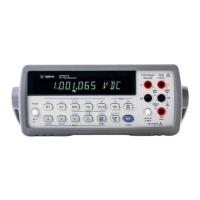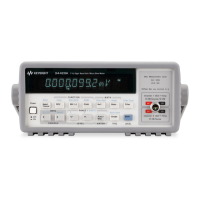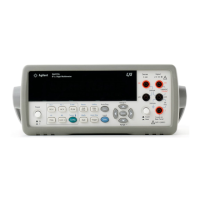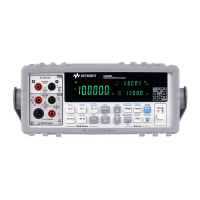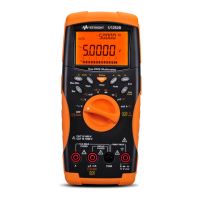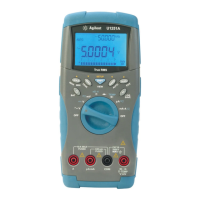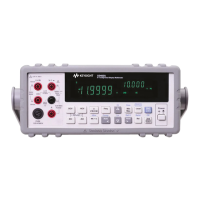Chapter 6 Command Reference 251
T
T
T is an abbreviation for the TRIG command.
Syntax T [event]
Refer to the TRlG command for more information.
TARM
Trigger arm. Defines the event that enables (arms) the trigger event (TRIG
command). You can also use this command to perform multiple measurement
cycles.
Syntax TARM [event][,number_arms]
event
The event parameter choices are:
Power-on event = AUTO.
Default event = AUTO.
number_arms
The number_arms parameter is valid only with the SGL trigger arm event; in this
case, the valid range is 0 - 2.1E+9. Specifying 0 or 1 with the SGL event has the
same effect as using the default value (1): the trigger is armed once and then reverts
to the HOLD state (disabled). When you specify a number greater than 1 as the
number_arms parameter, you have selected "multiple arming." In multiple
arming, the multimeter generates enough single trigger arms to satisfy the
number_arms parameter. Refer to "multiple arming" in the Remarks section
below for more information.
Power-on number_arms = 1 (multiple arming disabled)
event
Parameter
Numeric
Query
Equiv. Description
AUTO 1 Always armed
EXT 2 Arms following a low-going TTL transition on the Ext
Trig connector. (Executing TARM EXT clears the
trigger buffer if TBUFF is ON).
SGL 3 Arms once (upon receipt of TARM SGL) then becomes
HOLD
HOLD 4 Triggering is disabled
SYN 5 Arms when the multimeter's output buffer is empty,
reading memory is off or empty, and the controller
requests data.
